Talk with our local travel specialist who can help organize your trip.
20 Most beautiful Lakes in Nepal
Nepal is not just home to some of the world's highest mountains but also boasts beautiful and picturesque lakes in the Himalayan landscape. You may not know, but Nepal is the second richest country in inland water resources; Nepal is blessed with more than 6,000 rivers, 3,252 glaciers, and 2,323 glacial lakes. The towering mountains and glaciers are the sources of rivers and lakes. The elegance of lakes in the mountains and mid-hill attract travelers from around the globe. Also, over the years, local enthusiast travelers have shown a keen interest in exploring the beautiful lakes in Nepal.
The lakes in Nepal at higher altitudes have a religious significance, calling pilgrims from around the world. While some lakes, with their sheer beauty, are among the favorite travel destinations. Other lakes are known for their unique features and spectacular exquisiteness. Needless to say, some lakes in Nepal are well-known for their unmatched and notable traits, signing in the world record. That said, here are lakes that secure spots in the list of the 20 most beautiful lakes in Nepal.
Table of Content
- 1. Kajin Sara Lake
- 2. Tilicho Lake
- 3. Gokyo Lake
- 4. Rara Lake
- 5. Gosaikunda Lake (Man Sarowar)
- 6. Shey Phoksundo Lake
- 7. Panch Pokhari
- 8. Tsho Rolpa
- 9. Phewa Lake (Fewa Lake)
- 10. Khaste Lake
- 11. Begnas Lake
- 12. Imja Tsho Lake
- 13. Ice Lake (Kicho Tal)
- 14. Birendra Lake
- 15. Mai Pokhari
- 16. Indra Sarobar
- 17. Gangapurna Lake
- 18. Ghodaghodi Lake
- 19. Bish Hajari Lake
- 20. Kalmachum Lake
1. Kajin Sara Lake

Kajin Sara lake in the Manang district of Nepal is recently gaining fame for holding the quality of being the world's highest lake. Perched at a whopping 5,200 meters, Kajin Sara Lake is all set to become the world's highest lake, replacing Tilicho Lake. However, the altitude of this lake is not officially verified. Discovered recently, Kajin Sara Lake is located at Singarkharka in Chame Rural Municipality of Manang. Local believes that melting of the Himalayan glacier-formed this lake, estimated to be 1,500m in length and 600m in width.
This lake-24km away from Chame-is accessible by a trek to Chame, the headquarters of Manang District. Travelers need to reach Chame via jeep from Besisahar, Lamjung. Starting from Chame, walk for 6 hours uphill to Lamjung Himal Base Camp. The next day continues through the rugged trail to High Camp and on the 3rd day, walk for 2 hours to Kajin Sara at 5,020m. Finally, retrace your steps back to High camp (2 hours), Lamjung Bas Camp, and Chame rural municipality. The Kajin Sara Lake itinerary entails about a 3-4 days trek through virgin trail in the Annapurna region.
The best time to visit Kajin Sara Lake is between April and November. This beautiful lake at a whopping altitude rewards panoramic views of Manaslu, Mt Damodar, Annapurna, Mt Lamjung, and Mt Peri (Tibet). The journey to this lake marks a moderate difficulty level, and altitude is the prime concern of trekkers who want to explore this beautiful lake. Very few travel agencies have started offering travel itineraries for this lake. And apparently, very few travelers have explored this lake. Once it is verified and officially declared the world's highest lake, it is sure that this lake will draw thousands of international and local travelers alike.
2. Tilicho Lake

Tilicho Lake in the Manang district of Nepal is the secon highest lake in the world. It is situated at an altitude of 4,919m and is a prominent landmark in the Annapurna region of Nepal. This fresh Himalayan water lake also serves as the most popular side hike of Annapurna Circuit Trek. Trekkers attempting the classic Annapurna Circuit route take a detour to Tilicho Lake to embrace its beauty and indulge in tranquility. Every year, thousands of trekkers embark on a journey to Tilicho lake.
Tilicho lake is 55km away from the beautiful city of Pokhara, a couple of days trekking from Pokhara and Kathmandu. The trek starts from Chame, the headquarters of Manang District. The trekking route of Tilicho lake weave through famous stopping points in the Annapurna region like Chame, Upper Pisang, Manang, Siri Kharka, and Tilicho Base Camp. The trail features meadows, alpine valleys, terraced farmlands, verdant hills, Buddhist shrines, and beautiful mountain villages. You can complete the trek to Tilicho lake in about 10-12 days. The flat-roofed houses and Tibetan-influenced culture are the two distinct rewards this trek has to offer you.
The best time to explore Tilicho lake is in spring and autumn. It is moderate to difficult trek, ideal for physically fit trekkers. However, novice, as well as experienced trekkers, can do this trek. Your journey to Tilicho lake bestows awe-inspiring views of Annapurna II, Annapurna III, Gangapurna, and Dhaulagiri massif. Explore pristine Tilicho lake and soak in its beauty, and earn bragging right; yes, you have explored one of the highest lakes in the world.
3. Gokyo Lake

Gokyo Lakes-comprising six glacial-fed lakes- at 5,000m are the world's highest freshwater lake system. At an altitude of 4,700–5,000m, Gokyo Lakes are glorious jewels in the Everest region. The shimmering green water of Gokyo draws hundreds of trekkers and pilgrims every year. Hindus and Buddhists consider these lakes sacred; on the auspicious occasion of Janai Purnima, pilgrims take a holy bath in the lakes. According to Hindu mythology, these lakes are believed to be an abode of 'Nag Devata' (Snake God).
The Gokyo Lakes trek is one of the finest treks in Nepal. Reportedly, around 7,000 trekkers visit Gokyo Lakes annually. The Gokyo Lakes trekking trail entails a hike to Gokyo Ri, a vantage viewpoint in the Everest region. Gokyo Ri at 5,357m is popular for stunning views of Gokyo valley, Gokyo Lakes, and mountains like Everest, Lhotse, and Cho Oyu. The trail to Gokyo Lakes follows the classic route of Everest Base Camp Trek and passes through Ngozumpa Glacier, the largest glacier in Nepal. Trekkers return through the high pass of Renjo La. Phakding, Namche Bazaar, Dole, and Machhermo are the prominent stopping points along the route.
The best time to explore Gokyo Lakes is during spring (March to May) and autumn (mid-September to November). This trek deals with a soaring height of 5,357m and is considered a strenuous trek. Crossing high mountain passes, traversing the glacier and rugged trail can be challenging. On average, trekkers need to trek for 5-6 hours per day. This trek is ideal for trekkers with prior trekking experience.
4. Rara Lake

Rara Lake, the largest lake in Nepal, is among the popular travel destinations in Nepal. This lake at 2,990m offers a wonderful travel experience. The lake stretches to an area of 9.8 square kilometers in Rara national park. A trek to Rara lake takes you to the far-flung corner of Nepal near the Tibetan Border. Unlike other treks, this trek is unique on its own. This trek may not fascinate mountain-admirer, but unquestionably, it is a must-do trek. GORP (Great Outdoor Recreation Pages) founder Bill Greer described Rara Lake: "a shimmering blue jewel set in a ring of snowy peaks."
The Rara Lake Trek Route is swathed in small villages, pine, spruce, and juniper forest, tranquil valleys, and beautiful landscapes. The trek to Rara Lake begins with a scenic flight to Nepalgunj and then to Jumla. Next, start trudging through the remote trail in Western Nepal, soaking up the remoteness and wilderness. Chere Chaur, Chalachaur, Sinja Valley, and Ghorosingha are the main stopping points en route to Rara Lake.
The best time to visit Rara Lake is in spring and autumn. The pleasant weather and clear sky grant splendid views and promising circumstances. This trek is considered a moderate-level trek, ideal for both novice and experienced trekkers. If you are concerned about walking hours per day, be informed that you need to trek for 5-6 hours per day.
5. Gosaikunda Lake (Man Sarowar)

Gosaikunda Lake, the sacred lake at 4,380m, is situated in the Rasuwa district of Nepal. With 108 more lakes in its vicinity, Gosaikunda Lake calls for hundreds of trekkers and Hindu devotees every year. According to Hindu mythology, this lake is an abode of Lord Shiva and Gauri. A popular belief about Gosaikunda Lake is that Lord Shiva created the lake when he shoved his Trishul (holy Trident) into a mountain to extract the water to calm his burning throat after swallowing poison. During Gangadashahara and the Janai Purnima festival, thousands of pilgrims from Nepal and India embark on a spiritual sojourn to Gosaikunda Lake.
A journey to Gosaikunda begins with 8 hours drive to Dunche. The trek starts from Dunche and weaves through beautiful places like Deurali, Sing Gompa, Laurebina, and Gosaikunda Lake. The rolling hills, quaint villages, monastery, lush green forests, and rocky wasteland embellish the trekking trail. One can reach the lake in just 4 days. The awe-inspiring views of Mt Langtang, Mt Ganesh, Hiunchuli, Manaslu, and surrounding peaks is the major attraction of Gosaikunda lake.
Gosaikunda Lake Trek is a short and moderate-level trek in the Himalayas of Nepal best suited for both novice and experienced trekkers. Its close proximity to Kathmandu makes it the most popular trek among Nepalese trekkers. April to early June and September to November are considered the best months of the year to trek to Gosaikunda Lake. Be wise; don't trek during monsoon and winter. If you want to embrace the frozen Gosaikunda Lake, schedule your trek between January and February, as the lake remains frozen for 2 months.
6. Shey Phoksundo Lake

Shey Phoksundo Lake at 3,611.5m is a sacred lake to Buddhists and followers of the Bonpo religion. This alpine freshwater oligotrophic lake is a popular tourist destination in the Mid-Western Region of Nepal. Shey Phoksundo Lake was named a Ramsar site in 2007; means it is a wetland site possessing international importance under the Ramsar Convention. The shimmering turquoise Phoksundo Lake is the crowning jewel of Dolpo attracting hundreds of trekkers every year. The special highlight of Phoksundo Lake is the village of Ringmo that sits on the 30,000- to 40,000-year-old landslide dam. One can get insight into the Bon religion.
You can explore Phoksundo Lake 11 days from Kathmandu. The trekking part starts from Dunai after flying to Nepalgunj and Juphal. The trail winds through Tibetan villages, lush rhododendron forests, and dramatic landscape. Dunai, Chhepka, Ringmo, and Jhupal are the major stopping points of the Phoksundo Lake Trek itinerary.
If you want the best of the trek, visit the lake in the spring and autumn season. Trek to Phoksundo is fairly considered a moderate trek. That means you can do it with a decent plan and preparation. The highest altitude you reach is 3,612m.
7. Panch Pokhari

Panch Pokhari is undoubtedly one of the beautiful lakes in Nepal. Sitting at 4,100m in Sindhupalchowk district, Panch Pokhari is a group of 5 Hindu holy lakes and the 9th highest altitude wetland in the world. A popular Hindu pilgrimage site, Panch Pokhari allures avid travelers, especially local trekkers. The lake welcomes hordes of pilgrims in Janai Purnima. The sight of gleaming five ponds surrounded by green hills is a once-in-a-lifetime experience.
Easily accessible from Kathmandu, one can complete the trek to Panch Pokhari in a couple of days. The trail to Panch Pokhari is less-frequented and not a popular choice among international travelers. This means this trek is best for those who love the less crowded trail. Also, it is a newly opened trekking route in Nepal. From Kathmandu, head to Chautara by bus and hit the trail to Kami Kharka, Pauwa Bas, Hile Bhanjyang, and finally to the lake.
The best time to visit Panch Pokhari is during autumn and spring. The route of Panch Pokhari is considered an easy one. You can easily complete the trek within a week. The highest elevation of the trek to the lake is 4,100m.
Featured Trips
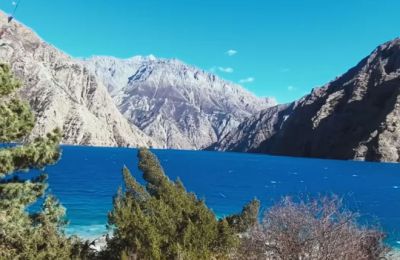
Phoksundo Lake Trek - 11 days
Phoksundo Lake Trek is one of the most pristine and untouched trails in Nepal. It is a short and relatively easy trekking route leading to the stunning pristine Phoksundo Lake in Nepal.
Inquire Now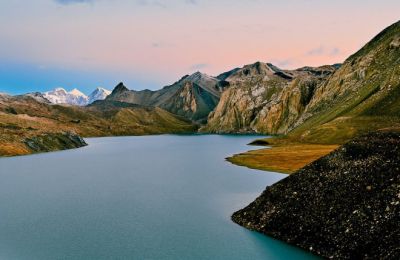
Tilicho Lake Trek - 12 days
Tilicho Lake Trek is one of the popular side hikes of Annapurna Circuit Trek. You will be trekking to pristine and turquoise-colored Tilicho Lake and enjoy the astounding view of the Himalayas to the highest lake in the world.
Inquire Now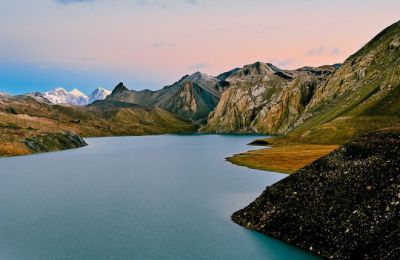
Annapurna, Nar Phu Valley and Tilicho Lake Trek - 19 days
Annapurna Circuit Trek with Nar Phu Valley and Tilicho Lake is a unique experience to take the off-the-beaten-path towards remote villages and visit one of the highest lakes
Inquire NowWhere to travel next?
Get help from our travel specialists for holiday ideas that matches your interests.
8. Tsho Rolpa

Tsho Rolpa Lake-perched at an altitude of 4,183m in the Rolwaling Valley between the Everest and Langtang regions-is one of the most beautiful lakes in Nepal. It is one of the biggest glacial lakes in Nepal. The name "Tsho Rolpa" has a special meaning in the Sherpa language; Tsho means Lake, and Rolpa means Rolwaling valley. This lake is different and ever-expanding. It has been expanding due to the rapid melting of an adjoining glacier over the last 6 decades. Research affirms that it is a potentially dangerous glacial lake due to the threat of glacial lake outburst flood (GLOF).
The lake is located around 115 km northeast of Kathmandu. The Tsho Rolpa Trek itinerary entails a total of 15 days. Dolakha is the starting point of Tsho Rolpa Trek. The route takes you to the Rolwaling Valley region. Singati, Jagat, Simigaon, Daldung-La, Beding, and Na are the popular resting grounds along the route. Crossing the Cantilever Bridge is one of the unique features of this trek. Throughout the trek, one can embrace the marvelous view of Gaurishankar Himal. The trail features terrace farmlands, cascading waterfalls, fast-flowing Rolwaling River, snow-capped mountains, Sherpa Culture, and monasteries (in Bedding and Na village).
As you guessed, the best time to trek to Tsho Rolpa Lake is during spring and autumn. Do not consider trekking in off-seasons. The trekking grade of the Tsho Rolpa trek is moderate to difficult. If you are a beginner trekker thinking of attempting the first trek, this trek is not a good choice; you may find this trek a bit challenging.
9. Phewa Lake (Fewa Lake)

Phewa Lake in Pokhara is the second largest lake in Nepal. It is a semi-natural freshwater lake enveloped by the lush Rani Ban and truly impressive for bestowing the reflection of the Annapurna range, Machhapuchre, and Dhaulagiri range. It is by far the most visited lake in Nepal. At the center of the lake is Tal Barahi Temple, the important religious monument of Pokhara. The emerald hue of the lake lures nature lovers and photographers. Whether you paddle on Phewa Lake to the tiny island in the middle of the lake, stroll through the Lakeside, or marvel at the sky to the north, you cannot get enough of Phewa Lake.
You can either fly or drive by tourist bus to Pokhara. You can opt for a local bus/van as well. The drive is 5-6 hours long, and it takes approximately 25 minutes by flight. Make sure to rent a canoe or a paddleboat and spend the day soaking up the exquisiteness of the lake. Or you can walk by the Lakeside and admire the amazing view of the emerald Phewa lake. Off the lake, you can head to Sarankot or World Peace Stupa, and trust us, there's a lot to do in Pokhara. But Phewa Lake steals the show for its magnificent beauty.
Autumn and Spring are the best time to visit Phewa Lake. However, you can explore the lake all year round. Visiting Phewa Lake does involve sightseeing and indulging in one-day routes. Anyone, be it a child or older person, can hop on the plane or vehicle and head to Pokhara to explore the lake.
10. Khaste Lake

Khaste Lake is a freshwater lake located in Pokhara. It is one of the 8 lakes in Pokhara and falls under the category of beautiful lakes in Nepal. It flourishes in an area of 25 hectares in Lekhnath metropolitan town. Admittedly, this lake is not so popular as Phewa Lake. Pisciculture is highly practiced in this lake. The lake is also known as Bird Wetland, a site for bird-watching as Siberian, Indian and Afghani birds fly down to Khatse Lake looking for wetlands and freshwater bodies. This lake has been assigned as a potential research center for migratory birds.
You can directly fly to Pokhara from Kathmandu- the quickest way to get to Pokhara. Local buses and tourist buses are readily available from Kathmandu. You can hire a private jeep/car as well. This lake, in general, attracts tourists and researchers alike. Upon reaching Pokhara, head to Lekhnath-3,4 and 6 Kharane Phant. It shouldn't take more than an hour to reach the lake from the bus station (or airport if you caught a flight).
Spring and autumn are deemed the best seasons to visit Pokhara to explore the lake. September to November is the ideal time to head to Pokhara. Pokhara, the second-largest city in Nepal, welcomes hundreds of trekkers who head to the Himalayas for trekking.
11. Begnas Lake

Begnas Lake is yet another beautiful lake in Nepal. A freshwater lake in the southeast of the Pokhara, Begnas Lake is unquestionably a must-visit place in the touristic hub of Pokhara. The lake is the largest lake in Nepal and a popular destination in Nepal. Hundreds of tourists head to Pokhara to explore this lake and particularly to admire the astonishing views of Annapurna and Manaslu Range from the lake. If you want to escape the chaos of Kathmandu or revel in serenity, head to Pokhara and explore this lake.
As expressed earlier, you can either fly to Pokhara or hop on the bus through the highway to Pokhara. The choice is yours. The lake is 30 minutes drive from Lakeside. The nearest bus stop is Milanchowk Bus Stop. You can opt for a long boat ride or go paddling solo and embrace the beauty of the lake and the peaks rising above the lake. Besides, you can have a picnic with your family/friends along the bank of the lake. Good side: the lake is less crowded than Phewa Lake.
You can visit the lake all year round. However, we recommend traveling to Pokhara during the month of September to November and March to May. For a pleasant experience, always travel during the spring and autumn seasons.
12. Imja Tsho Lake

Imja Tsho, a glacial lake at 5,010m in the Everest region, was formed from the melting of Imja Glacier, hence the name. It is one of the 21 glacial lakes in Nepal. This lake was identified as hazardous with the potential for a glacial outburst flood. Imja Tsho Lake is one of the fastest-growing glacial lakes in Nepal.
It is a 9-day trek from Lukla. The route to Imja Tsho Lake follows the classic trail of Everest Base Camp Trek. Namche Bazaar, Tengboche, Dingboche, and Chhukhung village are the major landmarks of this trek. Traverse the beautiful Sherpa villages, walk through the lush Rhododendron forests, get insight into local culture, and indulge in the mountain lifestyle. Your journey to Tsho Lake rewards stunning views of some of the highest mountains in the world, including Everest.
As everyone suggests, spring and autumn are the best seasons to trudge along the rugged terrains of the Everest region. Make sure you avoid traveling during monsoon and winter. Altitude Sickness should be the prime concern for trekkers heading to Imja Tsho Lake. This trek is leveled a moderate trek and is ideal for both novice and experienced trekkers.
13. Ice Lake (Kicho Tal)

Ice Lake in Manang at 4,620m is one of the highest frozen lakes in the Himalayas of Nepal. It is locally known as Kicho Tal, fed by the Chulu River. Ice Lake serves as a great side hike (acclimatization hike) and the major highlight of Annapurna Circuit Trek. The spectacular hike from Manang to Ice Lake- starting from 3,540m, ascending to 4,620m- rewards breathtaking views of Manaslu range, Annapurna range, Gangapurna, Tilicho, Chulu east and the Far East, Pisang peak, and surrounding peaks.
You can hike for 7 hours- to the lake from Braga, weaving through the well-marked trail. Braga, a traditional village, is roughly 30 minutes walk from Manang. The trail traverses slopes above Braga, alpine meadow, flat terrain, and zigzag-steep ridges. It is an approximately 11 hours drive to Manang and 45 minutes flight from Kathmandu. From Manang, it should take 7 hours to reach the lake. Your journey to Ice Lake follows the classic trekking trail of Annapurna Circuit.
Spring (March to May) and autumn (mid-September to November) are the best seasons to travel to Manang and Ice Lake. The trail is at its best, embellished with wildflowers and the skyline dominated by the towering peak. The short day hike to Ice Lake is considered a moderate trek, suitable for experienced trekkers. Travelers or trekkers with no prior experience may find it challenging tackling an altitude over 4,000m. Therefore, it is recommended to be concerned about your health and altitude sickness.
14. Birendra Lake

Birendra Lake, locally known as Birendra Taal, is a freshwater lake in Manaslu Glacier in the Gorkha district of Nepal. The waters of the Manaslu glacier feed this lake at 3,632m. Hike to Birendra Lake is considered an easy side trip of Manaslu Circuit Trek; trekkers traversing the route of Manaslu Circuit Trek spend their acclimatization days by hiking to this lake. Birendra Lake is about a 30-minutes hike from the popular village of Sama Gaon. The crystal-clear turquoise water and the mountain backdrop are what lures trekkers to undertake a beautiful journey to Birendra Lake.
To reach the lake, one must trek through the off-the-beaten-path of Manaslu. It is about a week trek to the lake from Barpak. You have to take 7-8 hours long drive to Barpak from Kathamandu. Laprak, Khorla Besi, Jagat, Dang, Prok, Lho, and Sama Goan are the major villages to rest overnight.
Considering the trail, it is a moderate trek. Spring and autumn are the best time to explore the lake. The major fraction of the journey is trekking, so it is not recommended to do it in winter and monsoon. Trekkers and wannabe trekkers with good health can do the trek. The highest elevation is 3,632m. One must be mindful of altitude sickness.
15. Mai Pokhari

Mai Pokhari, a Ramsar site, is a mid-hill wetland in the Ilam district of Nepal. Perched at an altitude of 2,100m, the lake is shrouded by the lush green forest of orchids, rhododendrons, and porcupines, flaunting a heavenly outlook. It is an important pilgrimage site for both Hindus and Buddhists. This wetland boasts rich flora and fauna, including but not limited to Schima, Castanopsis, laurel oak, white-rumped vulture, leopard cat, Eurasian otter, and variegated mountain lizard. According to the study conducted, there are 300 species of bird in the wetland.
This lake is located about 15 km from Ilam, the district headquarters. Catch a bus to Illam; it takes 12-14 hours to reach Illam. It's too long, right? Well, if you have limited time, you can catch a flight to Bhadrapur and enjoy the 1-hour drive to Illam from there. From Illam, you can reach the lake in 3 hours by vehicle.
The best time to visit the lake is in the spring season. Autumn season is also recommended. Winter and monsoon are considered off-season. But, as long as you are prepared, you can visit the lake all year round. Note: Mai Pokhari is cooler than Kathmandu.
Featured Trips
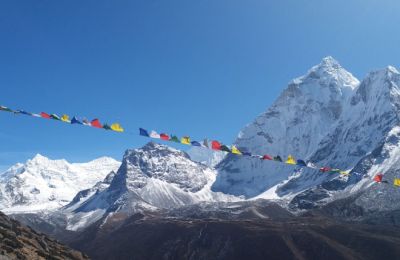
Everest Base Camp Trek With Gokyo Lakes - 18 days
Stunning Everest Base Camp Trek with Gokyo Lake – 18 days lets you explore the wilder side of Everest Region. Enjoy Gokyo Lakes trek with Cho La pass crossing.
Inquire Now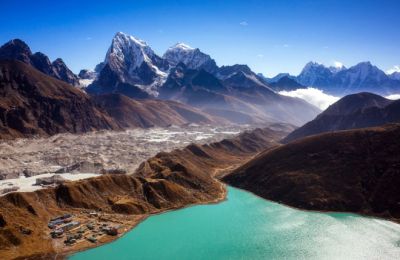
Gokyo Lakes Trek with Renjo La Pass - 14 days
Gokyo Lakes Trek 14 days take you across Renjo La Pass, the easiest pass of the Everest region. Spectacular Gokyo lakes and Everest mountain scenery.
Inquire NowWhere to travel next?
Get help from our travel specialists for holiday ideas that matches your interests.
16. Indra Sarobar

In no.16, we have Indra Sarobar, the largest artificial lake in Nepal. This lake- located in the Makwanpur district, around 50 km from Kathmandu- is praised for its alluring beauty. It was officially constructed to generate hydroelectricity for the Kulekhani Hydropower project. With its proximity to Kathmandu, Indra Sarobar lake is a quick escape from the chaos of Kathmandu city. It is also known as Kulekhani Dam. In recent years, local people have started using the lake for commercial breeding farms for fish, and this has boosted the local economy. It is believed that Late King Birendra created the lake in the name of his wife, Indra Rajya Laxmi Shah.
You can easily reach the lake from Kathmandu city. Hire a private van to the lake; it shouldn't take more than 2 hours. You can indulge in hiking to the lake, following the route from Thankot to Chitlang, Markhu, and Kulekhani. A must-do activity is to admire stunning views of the lake from the massive suspension bridge.
The best time to explore the lake is during spring and autumn. The balmy weather and clear sky add to a memorable experience. Nevertheless, there will be no complications when you travel to the lake in the winter season. We don't recommend monsoon for traveling. The road would be the worst of all and can lead to an unsuccessful trip.
17. Gangapurna Lake

Gangapurna Lake at 3,540m is a glacial lake in the Manang district of Nepal. The lake is formed from the melting of glaciers from Gangapurna, Annapurna IV, Khangsar Kang, and Glacier Dom. The pristine lake is draped in cyan during the spring and autumn; and white in the monsoon. The lake gets covered in snow during winter, attracting thousands of tourists. It is a major attraction in the Annapurna region of Nepal and is as popular as Tilicho Lake. Trekkers traversing the popular Annapurna Circuit trekking route hike up to the lake to acclimatize and immerse in the beauty of the lake.
You have to trudge along the trekking trail of Annapurna Circuit to explore this glacial lake. That means you have to trek for 4-5 days, heading to popular stops like Jagat, Dharapani, Chame, Pisang, and Manang. Manang is a prominent landmark and a popular acclimatization spot in the Annapurna region. This trek is an opportunity to explore Buddhist culture, interact with local people and admire the views of mountains. Mt Tilicho, Pisang Peak, Annapurna II, III, IV, Gangapurna and surrounding peak.
It involves moderate to difficult trekking style to explore the lake, following the world-famous Annapurna Circuit Trek trail. Spring and autumn are the best seasons to visit this site. Every day, you have to walk for 5-6 hours and the maximum height to conquer is 3,540m. Only experienced trekkers are suggested to do the trek. However, for novice trekkers, we recommend entailing at least a day of acclimatization in Manang.
18. Ghodaghodi Lake

Ghodaghodi Lake, established in 2003, is a Ramsar site consisting of a system of around 13 large and shallow oxbow lakes and ponds. The name literally means male and female horse in the Nepali language. This lake, surrounded by tropical deciduous forest, is the natural habitat of endangered animals like Bengal tiger, smooth-coated otter, Eurasian otter, marsh crocodile, red-crowned roofed turtle, three-striped roofed turtle, and several others; endangered bird species like vulture, darter, spiny babbler, the great salty woodpecker, and the great hornbill. Also, the Siberian bird species migrate to this lake during winter. This means this site is a great destination for ornithologists and nature admirers.
Although the best time of the year is during the month of spring and autumn, you can do the trek throughout the year. The best way to get to the lake is to fly to Dhangarhi and drive to Kailali District. This lake is easily accessible; the site is 100m north of the east-west highway.
You need not trek for days to explore Ghodaghodi lake. And the best part is you can complete the trip in a couple of days. If you travel in December, you can observe Agan Panchami, a traditional festival celebrated by the Tharu community.
19. Bish Hajari Lake

Bish Hajari Lake, a wetland and a Ramsar site inside of Chitwan National Park, is perched between the Mahabharat mountain range and the Siwalik range. Bish Hajari translates to 20,000 lakes in Nepali words. There are more than 20,000 small and big lakes, and hence the name. Another reason for its naming is that the shape of the lake resembles 20,000 as seen from the sky. This lake is a paradise for bird-watchers.
If you're planning to visit the lake, you will have to travel to Chitwan. It lies 5km from the main city of Bharatpur. You can hire a bike or jeep to get to Bish Hajari Lake. Don't forget to buy the ticket to enter the site.
The best time to visit the lake is from late September to May. Please skip the month of April and May as it is the hottest time of the year. The scorching heat in Chitwan would be a bad experience.
20. Kalmachum Lake

Kalmachum Lake at 3,800m is a high-altitude lake in the Manaslu region of Nepal. This lake serves as one of the best side trips of Manaslu Circuit Trek. Trekkers can easily visit the lake in a span of a couple of hours trek from Prok village-it lies above Prok village. This lake is also widely known by the name Kal Tal. Trekking agency offering Manaslu Circuit Trek recommends a detour to this lake that involves trekking through off the beaten path.
Kalmachum Lake is the largest lake in the Manaslu region. To reach this lake, one must follow the route of Manaslu Circuit Trek. It is a week trek from Soti Khola. The trekking trail features cirque-headed valleys, deep gorges, glacial valleys, towering peaks, and traditional villages.
The journey to Kal Tal fairly involves trekking for a week. The trek is graded moderate to difficult trek. Anyone in good shape and good health can do the trek. Although prior trekking experience is a plus point, it is not a requirement. Make sure you can trek for an average of 4-5 hours per day.
Conclusion
The lakes mentioned above are the most beautiful lakes in Nepal. Admittedly, these lakes are prominent attractions of Nepal, calling thousands of trekkers, nature-admirers, and travelers from around the world. Many of the lakes involve days of trekking through popular as well as newly opened trekking routes.
We offer itineraries for most of them, like Annapurna Circuit Trek (for exploration of Kajin Sara Lake, Tilicho Lake, Ice Lake, and Gangapurna Lake), Gokyo Valley Trek (for Gokyo Lakes), Langtang Gosaikunda and Helambu Trek (for Gosaikunda Lakes), Pokhara Day tours (for Phewa Lake, and Begnas Lake), Manaslu Trek (for Birendra Lake). If these itineraries do not best match your preference, we can customize them for you.
- Written by: Naba Raj Amgai
Updated: Jun, 27, 2021

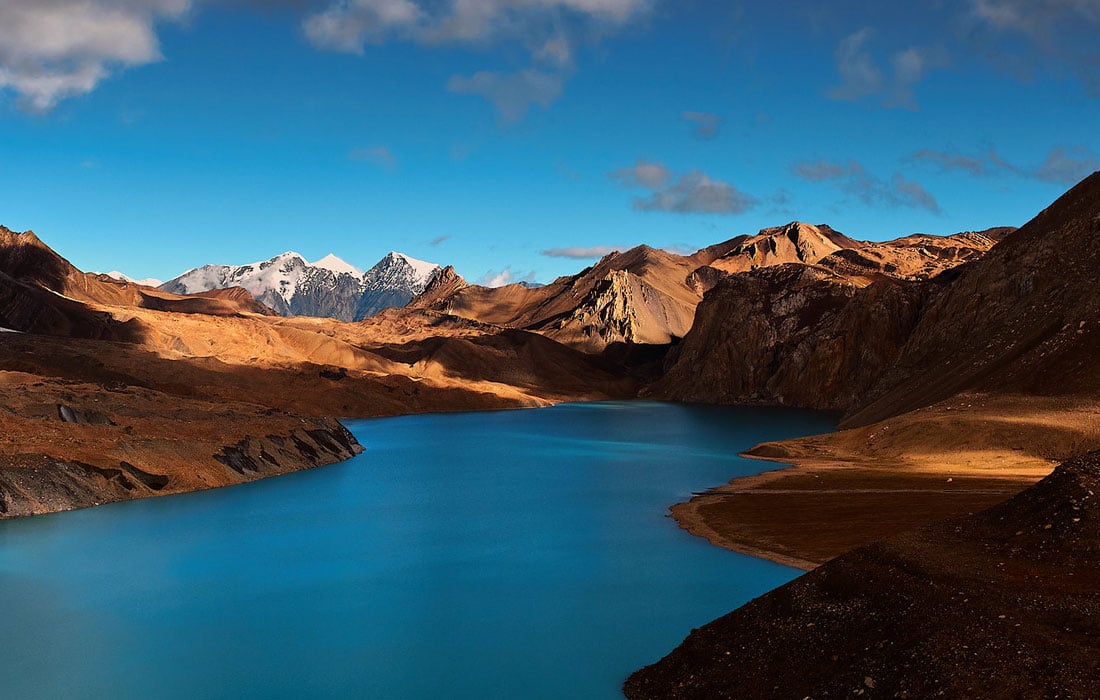

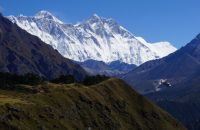
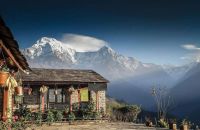
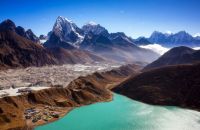
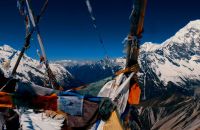
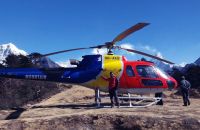





.jpegXkO.jpeg&width=200&height=130)










Recent Comments